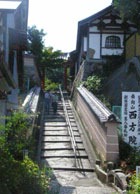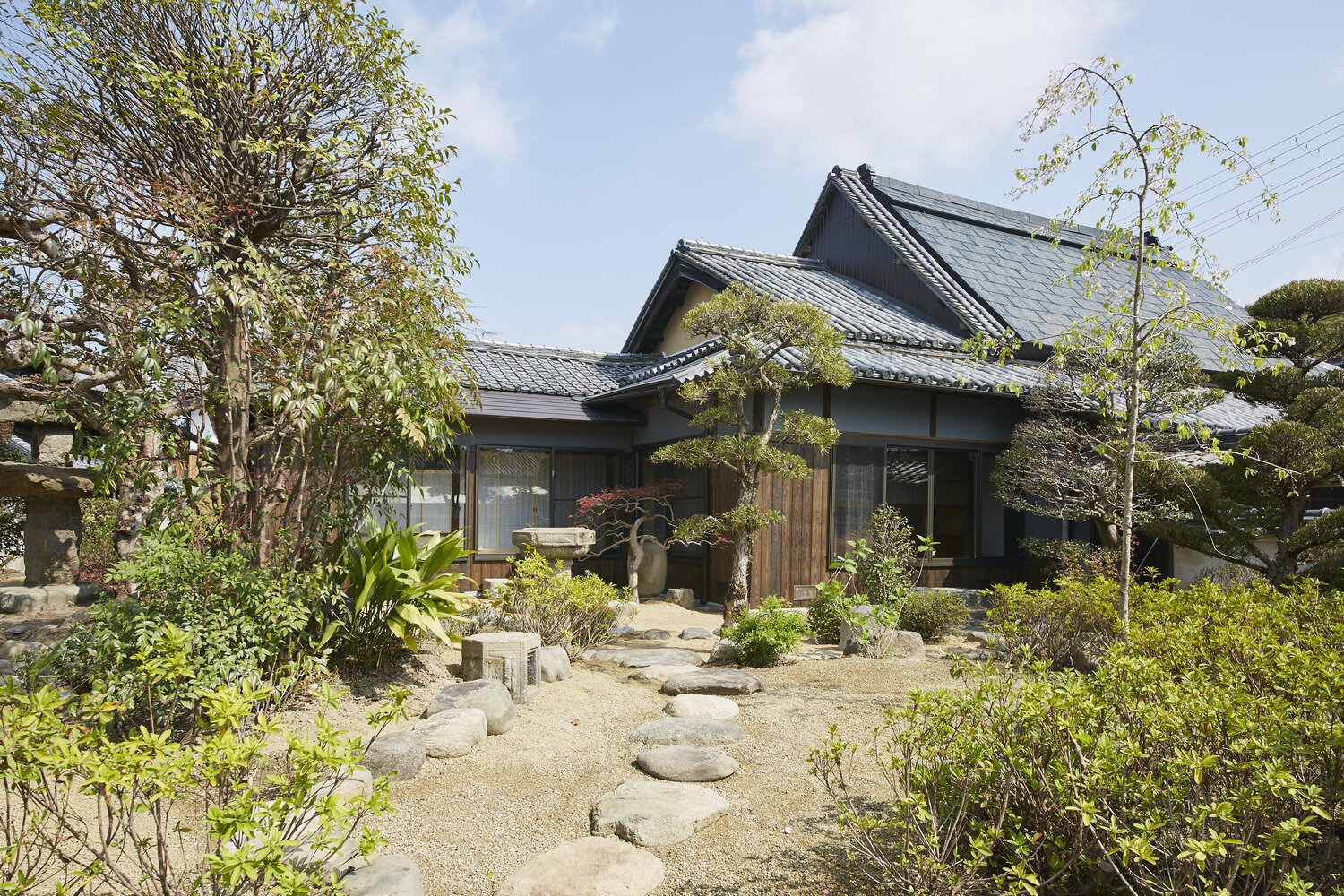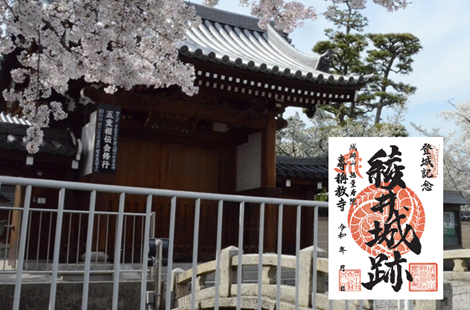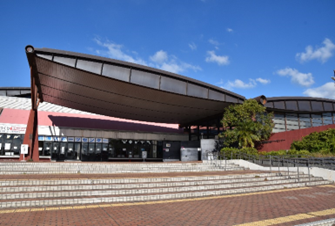
Experience Osaka's historical treasure trove with a walk through Minamikawachi
Away from the hustle and bustle of the city, take a train to the Minamikawachi area. It takes only about 30 minutes by train from Osaka city to the nearest station (Kintetsu Abenobashi Station to Kishi Station). Surrounded by the Kongo and Katsuragi mountains, Minamikawachi is one of Osaka's greatest historical treasures, with ``kofun,'' ``temples,'' and ``machiya.'' ``Taishimachi'' is a place associated with Prince Shotoku, and ``Tondabayashi Jinaimachi'' retains the townscape of Edo merchant houses. Listen carefully to the breath of history that can be heard here and there.
-
START
Kintetsu Kishi Station
-
About 10 minutes by busEifukuji Temple

Approximately 10 minutes by Kongo bus from the bus stop in front of Kintetsu Kishi Station. When you get off at the Taishi-mae bus stop, you will see a set of stairs right in front of you. Isonagayama Eifukuji Temple, the mausoleum of Prince Shotoku, is impressive because even from the bottom of the stairs, you can see the mausoleum in a straight line behind the vermilion southern gate. In addition to Prince Shotoku, there is a mausoleum (Sankotsu-byo) where his mother, Empress Anahobe no Hashihito, and his wife, Kashiwabe no Oiratsume, are buried. It is said that in order to protect it, Emperor Suiko built it, and Emperor Shomu maintained a large temple in the first year of Jinki (724).
-
Kondo (prefecture-designated cultural property)

As you pass through the South Gate, you will find a beautiful, well-maintained, gravel-covered precinct. On the left side of the precincts is a large temple called Kondo. The principal image is the 90cm tall Nyoirin Kannon. The side samurai are Fudo Myoo and Aizen Myoo. It is clear from the ridge tag left behind the attic that it was rebuilt in 1732, and along with this ridge tag, it is a cultural property designated by Osaka Prefecture.
-
Prince Shotoku Mausoleum

Proceed further up the stairs at the back of the precinct. Inside the Nitenmon gate, the Upper Mido Hall, Jodo Hall, Kyodo Hall, etc. were built to surround the mausoleum, and it is said that Prince Shotoku, his mother, and his wife are buried in the mausoleum, and it is called the Three-Bone Ichibyo. It is also said that in the past, when Kobo Daishi was visiting Jodo-do, music could be heard from the temple for 99 nights, and the three deities (Amida Nyorai, Kannon Bodhisattva, and Seishi Bodhisattva) visited the temple.
3minutes Walk -
Saihoin

Across the street from Eifukuji Temple, at the back of the alley, is Saihoji Temple. After Prince Shotoku's death, three of his nannies, Tsukimasuhime, Himasuhime, and Tamateruhime (supposed to be the daughters of Soga Umako, Ono Imoko, and Mononobe Moriya, respectively) shaved their heads, entered Buddhist temples, and stood in front of his grave. It is said that the temple began when a hall was built to pray for the soul of the prince. Saiho-in Temple is located on a staircase that is even longer than Eifuku-ji Temple, and from the top of the stairs, you can see the Imperial Mausoleum as if it were watching over you.
About 5 minutes walk from Kintetsu Tondabayashi Nishiguchi Station -
Former Sugiyama family (Important cultural property)

Return to Kishi Station and take the Kintetsu train to Tondabayashi West Exit. Just a 5-minute walk from the station, you can head to Jinaimachi, a town where merchants from the Edo period still remain. First, we headed to the former Sugiyama family, which operated a sake brewery from the Edo to Meiji eras and is said to be the oldest building in Jinaimachi. The former Sugiyama family is also known as the birthplace of Ryoko Ishikawa, a poet of the Myojo school. It is open to the public (for a fee) and you can tour the interior and gardens. Be sure to check out the details such as the transom, large floor space, and fusuma paintings here.
Tondabayashi City official websitesee spotAdults (16 years and older) 400 yen, Children (6 to under 16 years old) 200 yen, 20% discount for 20 or more people.
-
Jinaimachi Center

This facility is marked by a lantern located across from the former Sugiyama House. Trade tools, store signs, and onigawara tiles are on display. You can take a break for free, so stop by during your walk. Vending machines and restrooms are also available.
-
Jonomonsuji

Speaking of the main street of Jinaimachi at that time, this is Jonomon Dori. As you would expect from a main street, it is lined with temples and large old houses that used to run lumber merchants, breweries, oil shops, etc. The prosperity of the time can be seen in the large mansions, which are rarely seen in modern-day Osaka, with only one house per block. It may be fun to compare the architectural styles of each old house, such as white walls, board fences, wooden latticework, insect cage windows, onigawara tiles, and small roofs with smoke vents.
-
The path of Shinogaeshi and Atemage

Speaking of the main street of Jinaimachi at that time, this is Jonomon Dori. As you would expect from a main street, it is lined with temples and large old houses that used to run lumber merchants, breweries, oil shops, etc. The prosperity of the time can be seen in the large mansions, which are rarely seen in modern-day Osaka, with only one house per block. The white walls, board fences, wooden latticework, and insect cage windows of each old house (Mushikomado Jinaimachi was founded during the Sengoku period. There are many ways to avoid wars in various parts of the town. There are many points on the walls. One such example is the ``Shinogaeshi,'' which is a line of bamboo and trees lined up.Other examples include the ``Atemage no Michi,'' where the road in the town is shifted by about half a length to obstruct visibility. It is used everywhere.
- GOAL!
Additional Information
- drop-in spot
- Relax and heal the fatigue of your trip at Taishi Onsen.
- Taste spot
- The Center de village serves delicious Italian cuisine.
- souvenir
- The ``Jinaimachi Senbei'' by Kashiwaya Katsuragido, a long-established Japanese confectionery shop located in front of Tondabayashi Station, are branded with the branding irons of temples and old families in Jinaimachi, making them perfect as souvenirs and memories of your trip.












